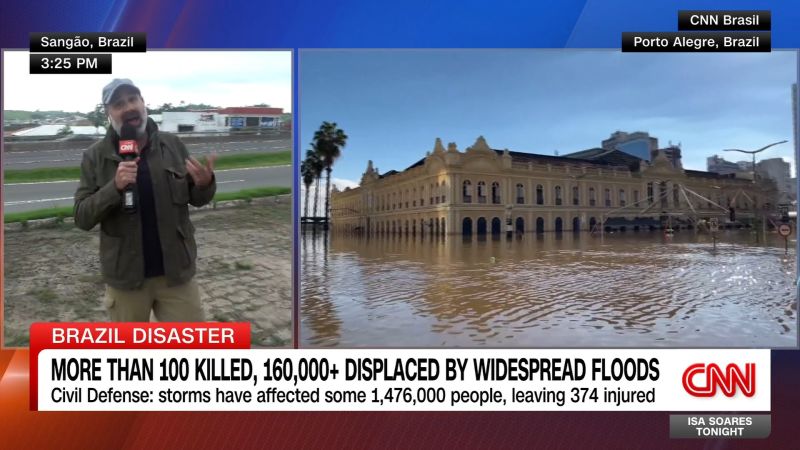The recent spate of devastation caused by severe flooding in Brazil continues to take a tragic turn, with the death toll now exceeding 107. This grim news is coupled with scientific predictions suggesting the possibility of even more intense rainfall, provoking fears of a deepening crisis.
Rooted in the states of Minas Gerais and Bahia, the flooding has wreaked havoc, affecting hundreds of thousands of residents and decimating numerous city infrastructures. According to humanitarian organizations, more than 120,000 people have been displaced, while quarterly reports reveal that over 80 cities have declared a state of emergency.
The calamities were precipitated by intense rainfall, which far surpassed average levels for the month. Experts from the National Institute for Space Research (INPE) reported that rainfall was 55% higher than usual, a considerable disparity which directly led to the overwhelming flooding incidents. The impact included landslides, building collapses, destruction of homes, and hundreds of people reported missing.
Amid such turmoil, concern grows as meteorologists predict Brazil will face even more powerful rainfall in the coming weeks. According to the National Institute of Meteorology (INMET), the southern and southeastern regions will experience a significant increase in precipitation, exacerbated by the intersection of a climate phenomenon known as atmospheric rivers, which carry vast amounts of water vapor from the tropics to the polar regions.
Furthermore, the Brazilian Civil Defense confirmed the added risk of landslides in populous areas due to the high soil saturation. This situation requires immediate and coordinated action from local authorities, as well as national and international entities.
The unprecedented amount of rainfall and catastrophic flooding has been linked by climate experts to global warming. The increase in temperature allows air to hold more moisture, hence leading to heavier rainfall. This pattern of extreme weather events has been increasingly observed in recent years, not only in Brazil but also in numerous other parts of the world.
Whilst immediate rescue and relief operations are crucial, equally important are long-term recovery solutions. In response to the crisis, the federal government has allocated emergency financial resources to aid affected municipalities. Strategies include rebuilding infrastructure, constructing safer housing, and investing in flood defenses.
Public health is another area of concern due to the heightened risk of waterborne diseases in the aftermath of such disasters. This has prompted sanitation campaigns and mass vaccinations to prevent the outbreak of diseases such as dengue fever and leptospirosis.
As Brazil confronts such a grave disaster, it is fundamental to learn from the crisis and implement more resilient measures to cope with the effects of climate change. Increasing climate resilience could involve strengthening infrastructure, improving prediction systems, and enhancing drainage systems.
The Brazilian flood crisis reveals the greater need for countries around the globe to reinforce their commitment to combating climate change. It is a stark reminder of the human and economic costs of extreme weather events, and the urgent need to invest in sustainable solutions, disaster risk reduction, and climate-resilient strategies.




